|
|
 |
 |
|
|
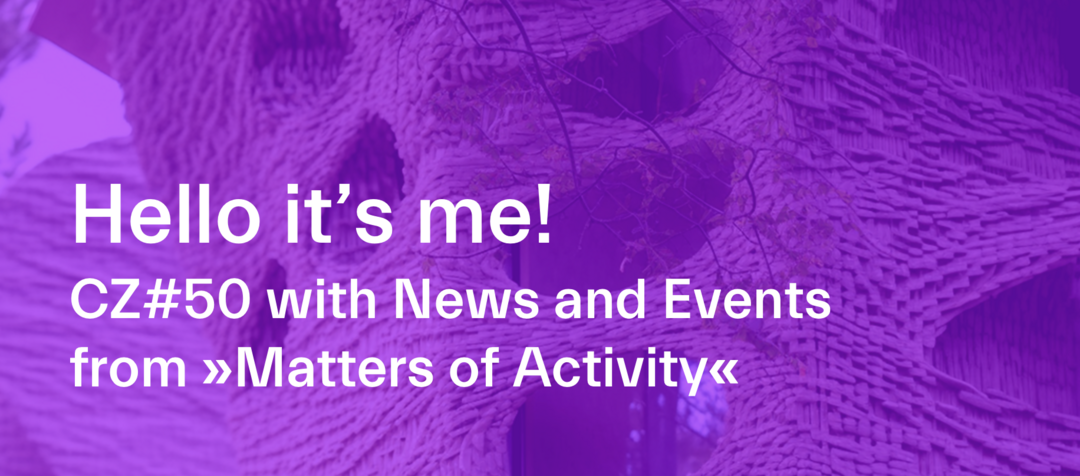
|
 |
MidJourney generated AI image for the prompts »architectured material across scales«, »topological interlocking«, »elastic instabilities« by Charlett Wenig, adapted by Matters of Activity
|
|
Editorial Dear Friends of »Matters of Activity«,
With the very well-attended opening of the exhibition »Airbound« at CLB Berlin last Thursday, we started into an eventful fall. Seize the opportunity to experience the results of the intensive work of the Experimental Lab »CollActive Materials« until November 9th!
And there is more, of course: This Thursday, the exhibition of the photographer Kathrin Linkersdorff will open at the Deichtorhallen in Hamburg. The series »Microverse«, shown for the first time, was created in collaboration with Regine Hengge. Furthermore, we are looking forward to our manifold contributions to the Berlin Science Week - starting with the »Brain Roads« workshop on November 2nd, organized by Patricia Ribault and Olaf Avenati, to the Science Slam of the Berlin Clusters of Excellence, where Emma Sicher will slam for MoA, to the Lecture Performance with Rüdiger Wenk, organized by Claudia Blümle and Christian Stein. On November 8th, the »Threads« workshop, organized by Lucy Norris, Hanna Wiesener, and Khashayar Razghandi, will kick off the MoA Open Space Days. In this context, we cordially invite you to join us for the opening of the »Activarium« on the evening of the 8th! On November 9th, we continue with hands-on workshops, live demonstrations, and impulses from our members at Sophienstraße 22a. We look forward to talking with you about long-standing and brand-new projects!
Enjoy reading this prosperous issue and hopefully see you soon at one of the many opportunities!
Antje Nestler, Carolin Ott & Franziska Wegener
|
 |
|
Liebe Freund:innen von »Matters of Activity«,
mit der sehr gut besuchten Eröffnung der Ausstellung »Airbound« im CLB Berlin am vergangenen Donnerstag sind wir in einen ereignisreichen Herbst gestartet. Noch bis zum 9. November gibt es Gelegenheit, die Ergebnisse der intensiven Arbeit des Experimentallabors »CollActive Materials« zu erleben!
Und es gibt natürlich noch mehr: Diesen Donnerstag wird die Ausstellung der Fotografin Kathrin Linkersdorff in den Deichtorhallen Hamburg eröffnet. Zum ersten Mal werden Arbeiten der Serie »Microverse« zu sehen sein, die in Zusammenarbeit mit Regine Hengge entstanden sind. Darüber hinaus freuen wir uns auf unsere vielfältigen Beiträge zur Berlin Science Week - angefangen beim Workshop »Brain Roads« am 2. November, den Patricia Ribault und Olaf Avenati organisiert haben, über den Science Slam der Berliner Exzellenzcluster, bei dem Emma Sicher für MoA slammen wird, bis hin zur Lecture Performance mit Rüdiger Wenk, organisiert von Claudia Blümle und Christian Stein. Schließlich starten am 8. November mit dem Workshop »Threads«, organisiert von Lucy Norris, Hanna Wiesener und Khashayar Razghandi, die MoA »Open Space«-Tage. In diesem Zusammenhang laden wir herzlich zur Eröffnung des »Activarium« am Abend des 8. Novembers ein! Am 9. November geht es weiter mit Hands-On-Workshops, Live-Demonstrationen und Impulsen unserer Mitglieder in der Sophienstraße 22a. Wir freuen uns darauf, mit Ihnen und Euch über bereits länger bestehende und brandneue Projekte ins Gespräch zu kommen!
Viel Spaß bei der Lektüre dieser besonders reichen Ausgabe und hoffentlich bis bald bei einer der vielen Gelegenheiten!
Antje Nestler, Carolin Ott & Franziska Wegener
|
 |
|
|
|
|
 |
| »Kultur und Informatik« geht neue Wege |
| Bericht von der 20. Tagung »Kultur und Informatik« in Lissabon |
 |
|
|
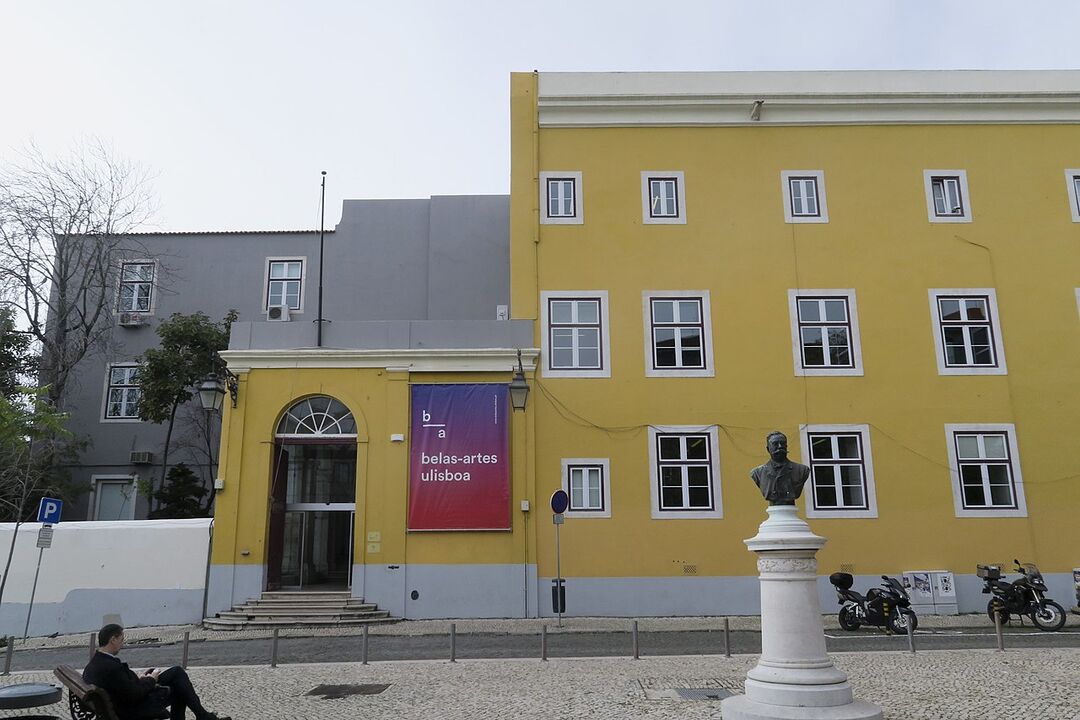
|
 |
Entrada da Faculdade de Belas-Artes da Universidade de Lisboa, Largo da Academia Nacional de Belas Artes, Lisboa. Copyright: WikiCommons, Manuelvbotelho, CC-BY-SA-4.0.
|
|
23.10.2023
|
 |
|
Filtering Über zwanzig Jahre lang war Berlin der Standort der internationalen Tagung »Kultur und Informatik«. Teilnehmer*innen aus der ganzen Welt kamen ins Schloßmuseum Köpenick, ins Bode-Museum, ins Pergamon-Museum oder ins Konzerthaus Berlin, um dort gemeinsam über den Einsatz aktueller Computertechnologien im Bereich der Kulturvermittlung, des cultural heritage, der Mensch-Computer-Interaktion oder von Big-Data Technologien immer auch aus der konkreten Anwendungsperspektive heraus nachzudenken. Im September dieses Jahres wurde die Tagung erstmals in Portugal an der Faculdade de Belas-Artes da Universidade de Lisboa durchgeführt und wird von nun an jährlich abwechselnd in Berlin und bei einem internationalen Partner stattfinden. Cluster-Mitglieder Johann Habakuk Israel, Christian Kassung & Jürgen Sieck berichten über die geglückte Premiere und die Ergebnisse der diesjährigen Tagung, die unter der Überschrift »Code and Materiality« stand.
→ more
|
 |
|
|
|
|
 |
| Der Moses Michelangelos und die Sammlung von Idolen |
| Horst Bredekamps neue Publikation beleuchtet Freuds figürliche Psychoanalyse |
 |
|
|
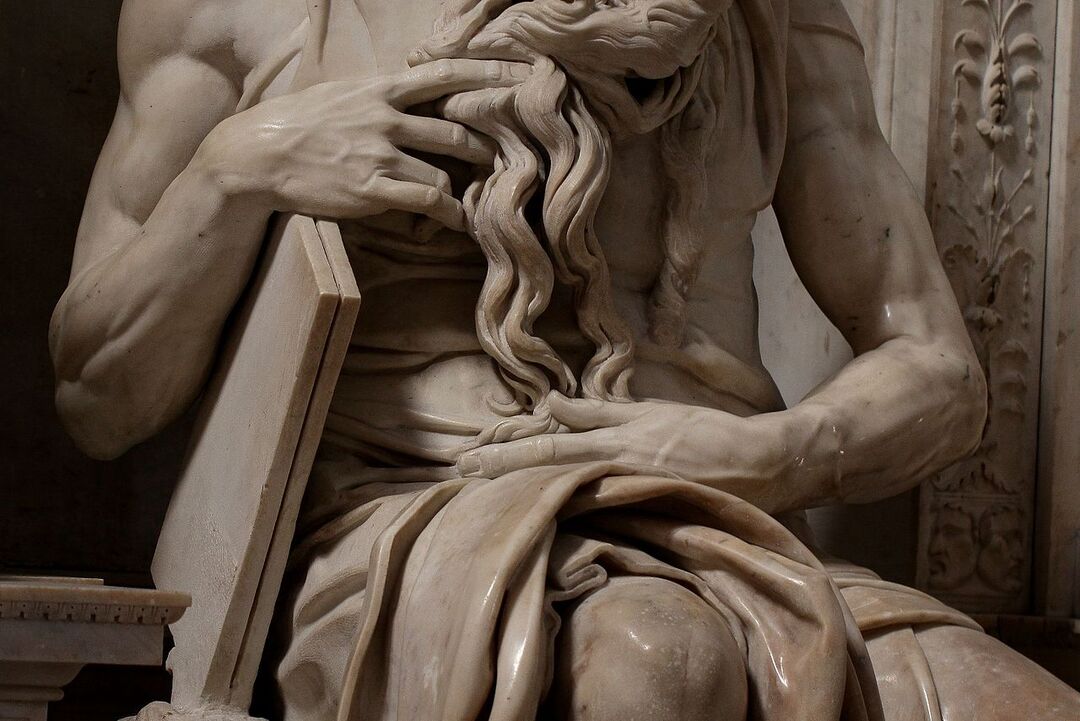
|
 |
Michelangelo Buonarroti, Detail, Tomb (1505–1545) for Julius II., San Pietro in Vincoli (Rome). Copyright: WikiCommons, Jörg Bittner Unna, CC-BY-3.0.
|
|
23.10.2023
|
 |
|
Symbolic Material Sigmund Freuds Untersuchung des Moses von Michelangelo sowie seine Sammlung antiker Kleinskulpturen bieten, gemeinsam betrachtet, Elemente einer visuellen Psychoanalyse, die dem ikonoklastischen Grundzug dieser Wissenschaft widerspricht. Freud bezog seine Statuetten in die Behandlungspraxis ein und ließ sich auch selbst von ihnen inspirieren. Seine Sammlung, das zeigt die neue Publikation von Cluster Co-Sprecher Horst Bredekamp, ist ein Schlüssel für seine Wissenschaft des Unbewussten. Um ihre Wirkung zu nutzen, musste Freud diese Form der Behandlungspraxis verbergen, sie »verhüllen«. Nur wenn man diese Motive berücksichtigt, ist zu erschließen, wie stark die Psychoanalyse als ein Ort der Befreiung von kulturellen Zwängen gedeutet werden kann.
→ more
|
 |
|
|
|
|
 |
| Licht und Dunkel |
| Cluster Co-Sprecher Horst Bredekamp und Olaf Müller über naturphilosophische und bildwissenschaftliche Perspektiven der Aufklärung |
 |
|
|
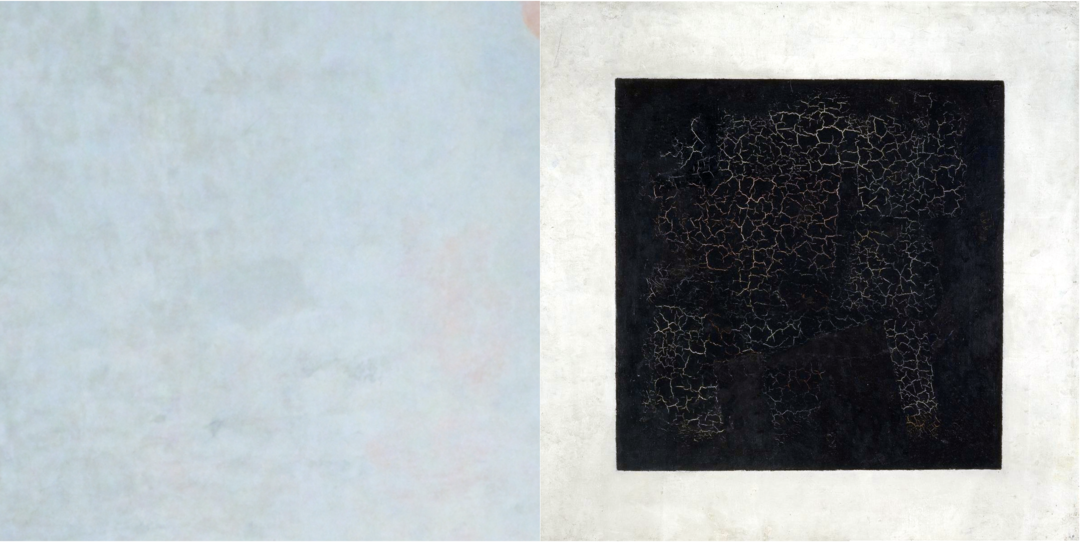
|
 |
Links: Detail des Himmels um die Darstellung der Asia im Deckenfresko Giovann Battista Tiepolos im Treppenhaus der Würzburger Residenz. Copyright: WikimediaCommons, Foto: Myriam Thyes, CC BY-SA 4.0; rechts: Kasimir Malewitsch, Das schwarze Quadrat, Öl auf Leinwand, 1915, Tretjakow-Galerie, Moskau. Copyright: Public Domain.
|
|
30.10.2023–12.2.2024
|
 |
|
Symbolic Material | Teaching In der Ideengeschichte der Metaphysik, Kunst, Naturphilosophie und Naturwissenschaft treten immer wieder ganze Netze dualer Gegensätzlichkeiten wie die zwischen Licht und Schatten, Geist und Materie, Wärme und Kälte, Plus und Minus, Gott und Schöpfung, Ausdehnung und Zusammenziehung, Vernunft und Gefühl, Denken und Wahrnehmung auf. Die im Wintersemester 2023/2024 von Cluster Co-Sprecher Horst Bredekamp und Olaf Müller angebotene Vorlesung wird in ihrem Versuch, eingeschliffenen Dualismen zu entgegnen, zentrale Anliegen von »Matters of Activity« thematisieren. Im Wechselspiel der Fächer Kunstgeschichte und Philosophie, also auch mit Blick auf die Polarität von Text und Bild, werden historische Varianten dieser Ideen zur Diskussion gestellt und mit dem aktuellen Stand derartiger Überlegungen verknüpft. Start ist Montag, der 30. Oktober 2023 um 18 Uhr, die Vorlesung ist offen für Hörerende aller Fakultäten sowie für die interessierte Öffentlichkeit.
→ more
|
 |
|
|
|
|
 |
| Threads: Localities & Temporalities of a Fiber Bio-Economy |
| Activating Circular Networks Goes Berlin Science Week 2023 |
 |
|
|

|
 |
Samples of Flax Fiber Bundles as a precursor for Architectural Yarns, adapted by Node Berlin/Oslo. Copyright: Maxie Schneider, Max Planck Institute of Colloids and Interfaces, weißensee school of art and design, Matters of Activity
|
|
8.11.2023
|
 |
|
Weaving | Material Form Function | Filtering | Science Communication | Yarns/Fibers | Circular Economies How can we deal with the complexities of transitioning to a bio-economy in which natural fiber could play a major role? The second event in the »Activating Circular Network« series unfolded on November 8th, 2023 as a pivotal part of MoA Berlin Science Week. The aim of the organizers Lucy Norris, Khashayar Razghandi, and Hanna Wiesener was to bring together diverse actors — researchers, designers, entrepreneurs, activists and artists — to explore the complexities of transitioning to a bio-economy of natural fibres.
→ more
|
 |
|
|
|
|
 |
| Critical Times. Part I: Multiple Matter |
| Workshop with Contributions by T. J. Demos, Sandra Jasper, Kiran Pereira & David Weber-Krebs |
 |
|
|
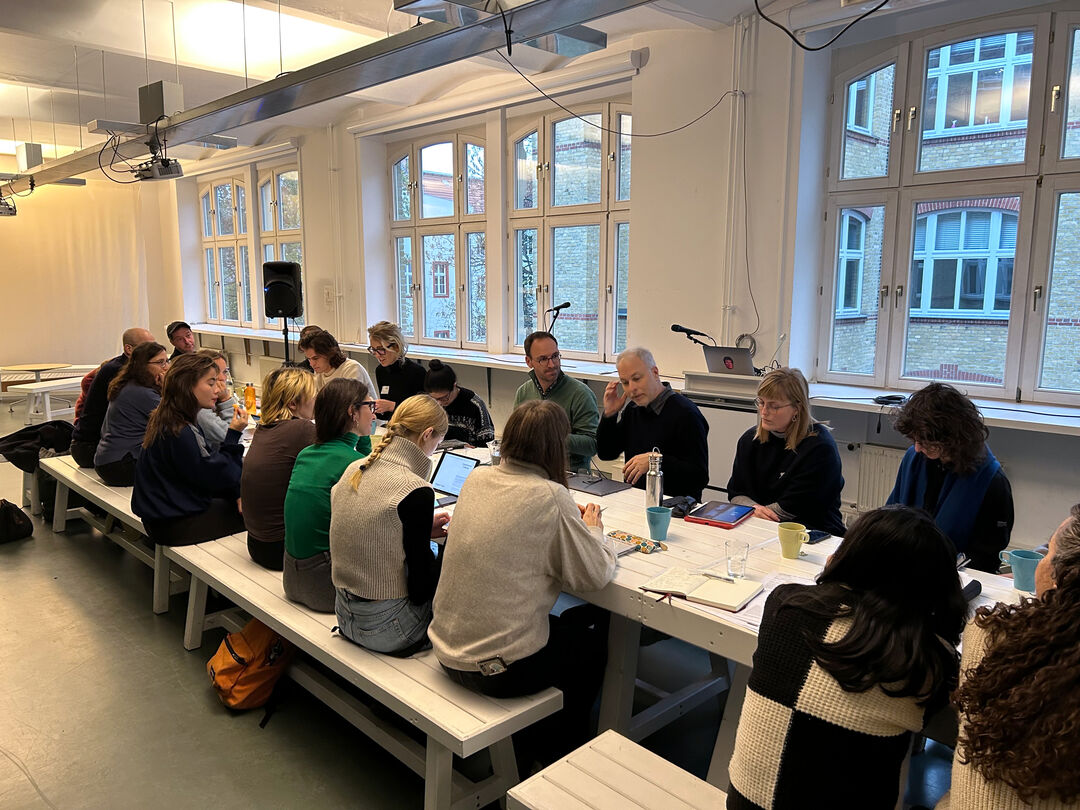
|
 |
Workshop participants discussing T.J. Demos recent book »Against the Anthropocene: Visual Culture and Environment Today« with the author. »Critical Times« at »Matters of Activity«, 17 & 18 November 2023
|
|
17.11.2023–18.11.2023
|
 |
|
Material Form Function | Temporality Time has become an increasingly critical factor and concept in the wake of Anthropocene debates. With the workshop »Critical Times. Part I: Multiple Matter«, which took place at »Matters of Activity« on November 17 and 18, the organizers asked, what times and temporalities shape the pressing crises of the present but also what temporalities allow for a critical response to a homogenizing crisis of such a present. The focus of the workshop resided in the conjunctions between speculative practices and narratives, other-than-scientific modes of sense-making as well as enchanting, violent, or haunting counter-/temporalities unfolding through eco-artistic practices. Around twenty-five multidisciplinary workshop participants engaged in discussions together with our invited guests — T.J. Demos, Sandra Jasper, Kiran Pereira and David Weber-Krebs.
→ more
|
 |
|
|
|
|
|